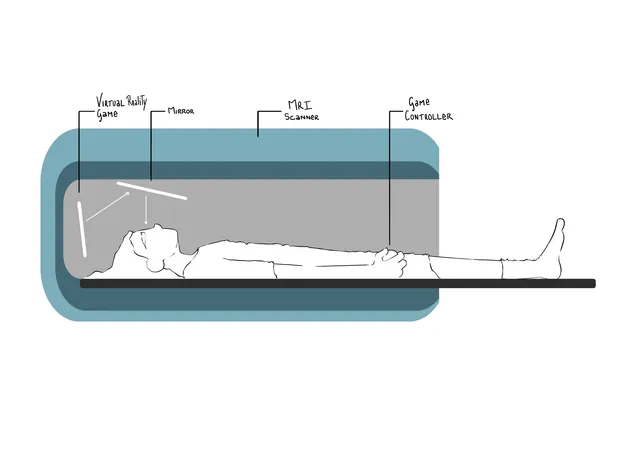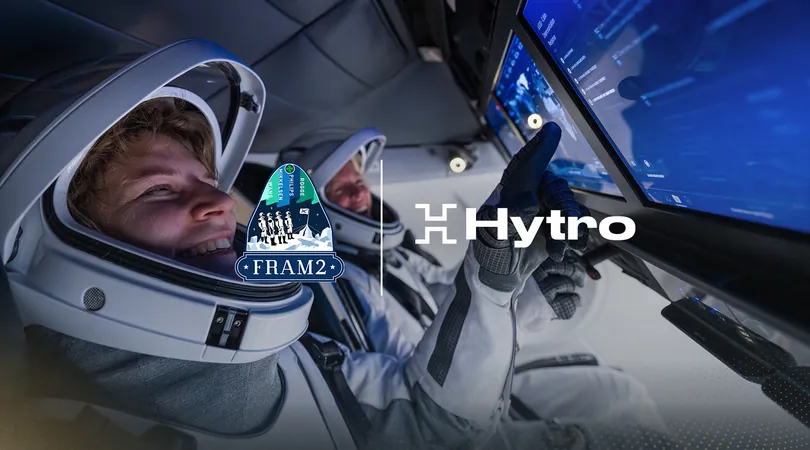
Groundbreaking VR Study Uncovers Distinct Brain Activity Patterns in Children with ADHD!
2025-03-24
Author: Yu
Groundbreaking Study Reimagines ADHD Research
In a groundbreaking study that merges virtual reality gaming with neuroscience, researchers from several prestigious European universities have revealed how brain network activity in children with clinically diagnosed ADHD is markedly different when engaged in interactive tasks. Traditionally, ADHD research has focused on brain imaging during resting states, but this innovative approach provides unprecedented insights into the challenges faced by children with ADHD in real-world scenarios.
Key Insights from the Study
Juha Salmitaival, known as Salmi and a visiting professor at Aalto University, underscores the importance of this study: "Taking pictures of the brain while memory and attention are being loaded in a virtual world gives us a deeper understanding of what's going on." During an immersive VR game, researchers observed significant differences in brain activation among children with ADHD, especially in deeper brain structures and their connections to the cortex.
Innovative Methodology
The study, published in the journal PLOS ONE, incorporated functional MRI (fMRI) scanning while children navigated challenges that mirror real-life situations. The VR game was cleverly projected onto a mirror, allowing children to engage fully while their brain activity was monitored. In stark contrast to the dynamic nature of gaming, their brain scans showed no significant activity differences during passive activities like video watching or resting.
Challenging Previous Notions
"Interestingly, while at rest, there was no detectable difference between the groups, and there was little difference during video viewing," Salmi noted. This underscores the potential of this method for neuroimaging and the understanding of ADHD.
Implications of Gaming and Environment
The research challenges previous notions about ADHD, shifting the focus from isolated brain regions to the importance of communication between them. Salmi emphasizes that ADHD-related alterations stem from interactions with one's environment rather than mere background brain activity. This revelation paves the way for more effective psychological assessments, suggesting that tests should be conducted in settings that actively provoke ADHD symptoms.
The Role of Fast-Paced Media
Moreover, the implications of video gaming are profound. Researchers believe that the fast-paced, stimulating nature of modern gaming and social media—think TikTok and Snapchat—could be reshaping our brains in fundamental ways. "If the environment is fast-paced, the brain adapts to that speed, making it harder to concentrate when things slow down," explains Salmi. This could lead to an alarming trend where children become accustomed to rapid stimuli, adversely affecting their ability to focus in calmer situations.
Future Directions in ADHD Research
Looking ahead, Salmi and his team plan to explore even more innovative methodologies. Future studies could employ smart suits and motion sensors to provide deeper insights into how ADHD symptoms manifest in children's day-to-day activities. The visionary professor also anticipates a future where symptoms could be assessed with augmented reality glasses in the comfort of one's home.
Wider Implications for Diagnostics
While fMRI technology remains cost-prohibitive for widespread diagnostic use at this stage, Salmi expresses optimism that these advances in research could lead to simpler, more accessible diagnoses of neuropsychiatric conditions. In addition to researchers from Aalto University, the study brought together experts from HUS, the University of Helsinki, the University of Oulu, and the Lyon Neuroscience Research Center in France. The virtual game used in the study, dubbed Epeli, was developed by a Finnish company called Peili Vision, showcasing the intersection of technology and healthcare.
Conclusion: A New Era in Understanding ADHD
As we continue to unlock the mysteries of the brain through novel technologies, this research could not only enhance our understanding of ADHD but also set the groundwork for innovative non-pharmacological treatments. The age of exploring the brain through virtual reality is just beginning, and the potential implications for children's mental health are truly exciting!



 Brasil (PT)
Brasil (PT)
 Canada (EN)
Canada (EN)
 Chile (ES)
Chile (ES)
 Česko (CS)
Česko (CS)
 대한민국 (KO)
대한민국 (KO)
 España (ES)
España (ES)
 France (FR)
France (FR)
 Hong Kong (EN)
Hong Kong (EN)
 Italia (IT)
Italia (IT)
 日本 (JA)
日本 (JA)
 Magyarország (HU)
Magyarország (HU)
 Norge (NO)
Norge (NO)
 Polska (PL)
Polska (PL)
 Schweiz (DE)
Schweiz (DE)
 Singapore (EN)
Singapore (EN)
 Sverige (SV)
Sverige (SV)
 Suomi (FI)
Suomi (FI)
 Türkiye (TR)
Türkiye (TR)
 الإمارات العربية المتحدة (AR)
الإمارات العربية المتحدة (AR)